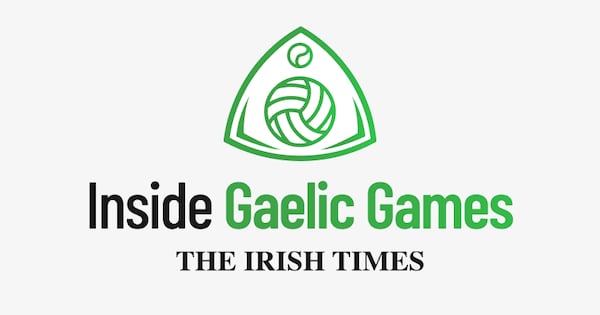Gaelic football’s forward momentum
Give them space and they will thrive – Gaelic football is becoming a sport for forwards once again.
The lexicon of the game had utterly changed over the last decade or so – lateral football, packed defences, short kickouts, ball retention. Sweepers became game-changers – the importance of Cian O’Sullivan to Dublin’s all-conquering squad was regularly discussed and highlighted.
But last Sunday night we were talking about hat-tricks and superb long-range shooting – the brilliance of David Clifford, the genius of Shane Walsh, and the delight at being able to watch them uncaged.
The FRC enhancements are attempting to create a better game, a better spectacle. They haven’t all been universally welcomed and certainly some tweaking will be needed, but creating space for inside forwards has allowed the gifted shooters to display their talents again – no longer are teams capable of simply double marking the opposition’s best forward or taking them out of the game by bottling them up within a mass defence.
Inside Gaelic Games: The weekly GAA newsletter from The Irish Times
Wild scorelines mean no lead in hurling is safe any more
Five things we learned from the GAA weekend: A ludicrous rule, GAA+ verdict and the joy of Munster
Leitrim’s spirited defeat to Mayo treated with glee compared to glory days of the 1990s
Last Sunday’s game against Tyrone was Clifford’s first start of the season. He finished the contest with 3-3 – who could have guessed that with a little more room the Kerry forward would make hay?
Walsh is probably the outstanding player in this year’s league and has fired over two-pointers in all four of Galway’s games. He finished Sunday’s win over Donegal with 11 points – including four two-pointers.
Darragh Canavan returned to action for Tyrone on Sunday and chipped in with 1-4.
The FRC’s Statistical Analysis Report shows that the average number of shots per game has increased from 49.9 in the 2024 championship to 56.1 in this year’s league – a figure that is likely to grow when the weather and pitches improve.
So, this morning the talk is all of Clifford and Walsh. The previous weekend Diarmuid Murtagh scored 12 points for Roscommon as he became the county’s all-time top scorer while Michael Murphy made headline with a silver screen type comeback for Donegal on the same day. In this new version of Gaelic football, it seems forwards are taking centre stage as the lead characters once more. — Gordon Manning
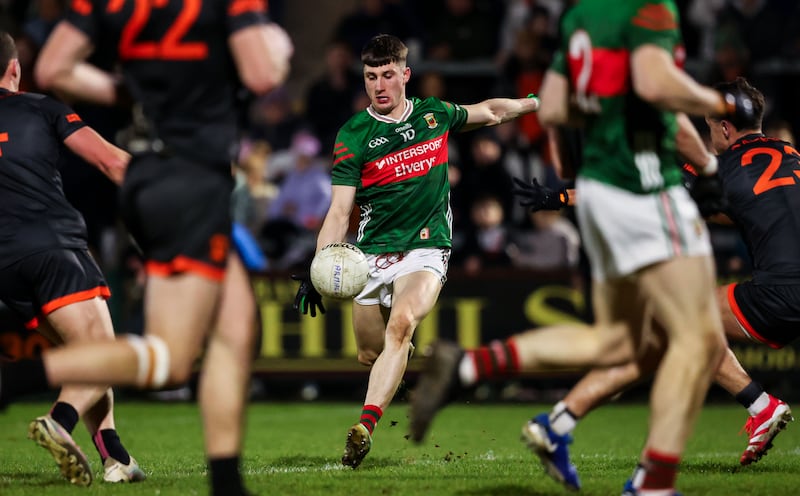
Davitt Neary adds a splash of you-can’t-teach-that to the Mayo attack
Welcome to the jungle, Davitt Neary. The young Mayo wing-forward had already given notice in the first three league games that he might be considered a find but his goal against Armagh on Saturday evening moved things onto another level. He doesn’t get to be a surprise package to anyone now.
His turn of speed, his direct running, the coolness of his finish – all these aspects of his goal were impressive. But what Mayo people would have taken away from it most of all was the sheer chutzpah of it.
Mayo were six points down with just over 20 minutes to go in the back yard of the All-Ireland champions when Neary took off running as Ryan O’Donoghue stood over a sideline ball. The pass to him was clever but there was also a hint of the hospital about it – a smidge later getting to it and Neary would have been clattered by Paddy Burns. Burns turns 32 this year, Neary was playing in his fourth senior game for Mayo. You’d have forgiven the young man for thinking twice.
But not a bit of it. He had the wit to flick the ball past Burns and send the experienced defender for a taxi. He zipped into the Armagh square, leaving Jemar Hall (no slough) for dead. And instead of snatching at it, as many, many Mayo forwards down through the generations would have done, he had the stones to flick a right-footed finish in the manner of Con O’Callaghan in the 2017 final.
Unlike Con, Neary has no underage GAA pedigree. He was better known as a soccer player as a teenager and is also a national and European champion kickboxer. So maybe he doesn’t know what he doesn’t know and doesn’t come to the Mayo scene carrying any sort of baggage.
Either way, this was the exact right play at the exact right time and brought Mayo back into a game they were gone out of. It’s only the league and there are miles to go and history weighs heavy on any Mayo forward who flashes a bit of early leg. But there was an element of you-can’t teach-that in Davitt’s goal. Every serious team needs a bit of it. — Malachy Clerkin
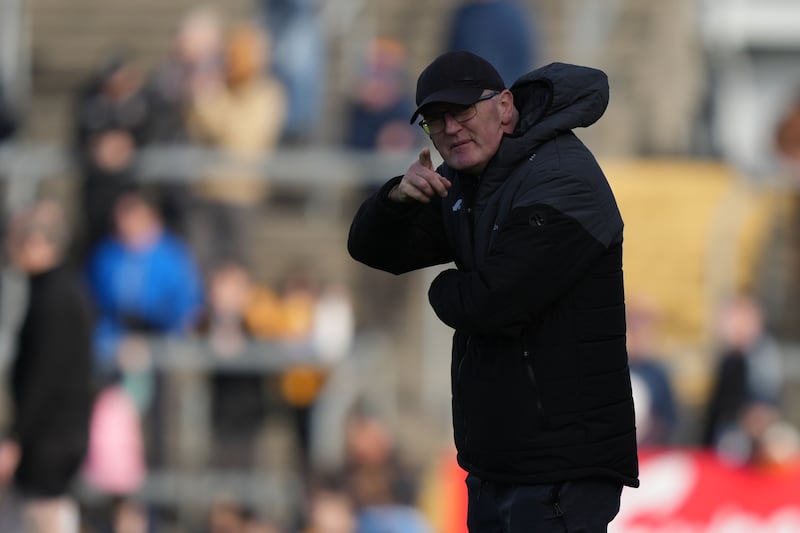
Lohan’s odd league history with Wexford
Clare’s unexpected defeat by Wexford in Ennis is the latest eventful outcome of matches between the pair during Brian Lohan’s management. The All-Ireland winning manager took over in time for the 2020 competition and has never beaten Wexford in the spring competition in Ennis but has never been beaten in Wexford.
Of the counties’ six league matches since 2020, Wexford hold the balance of success, 3-2 with one draw.
On taking over, Lohan very quickly found himself in Wexford in a face-off with former county team-mate Davy Fitzgerald, manager of the then Leinster champions. A low-scoring win maintained Clare’s good start to a league that would end in the grim chaos of Covid.
It also featured an impressive turn in the half forwards by the home manager’s namesake David Fitzgerald, who had just been re-purposed as a half-forward after a county career at wing-back and would later win two All Stars in his new position.
Keith Rossiter on Sunday was the third manager of the county to line up against Lohan in the past six years. All of them, Fitzgerald and Darragh Egan previously, have now won a league match in Cusack Park.
Of course, Egan also had the worst experience in the fixture, the whopping 6-25 to 1-18 defeat in the 2023 league.
There is a championship bottom line to all of this, all the more peculiar given the contrasting league fortunes. Lohan has faced Wexford four times in five years and won all of them, including last year’s All-Ireland quarter-final en route to the Liam MacCarthy. — Seán Moran
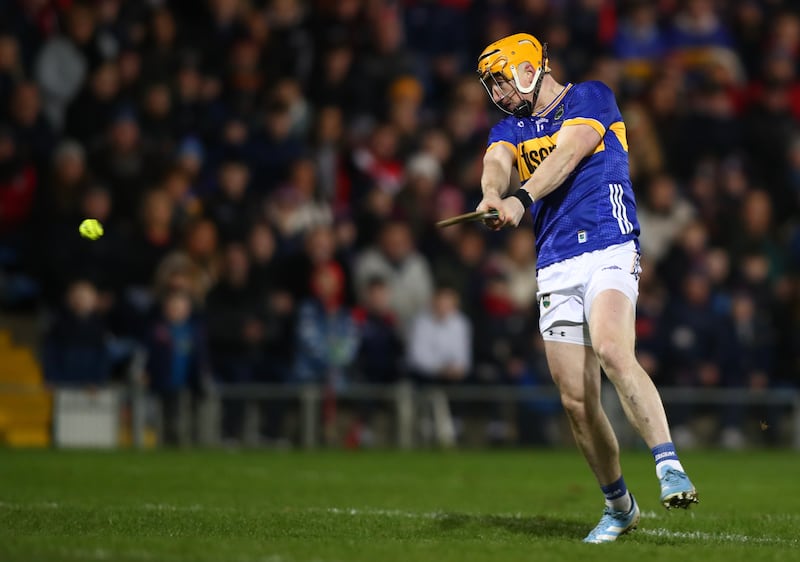
Without adjusting for inflation, goals still carry weight
After Cork lost to Tipperary by four points on Saturday night Pat Ryan bemoaned the goal chances they had missed. By his reckoning Cork had left “six or seven” goals behind them. When they reflected on last season it was clearly something that had come out in the wash.
“That’s something that we have to work on, because that was an Achilles heel we had last year,” said Ryan. “We were creating an awful lot of chances and our efficiency from open play was very good for points – it was very good again tonight – but our efficiency for taking goal opportunities is something we’ve been working on but obviously needs further work.”
The scoring boom in hurling has been driven by points, and particularly long-range shooting. In football’s rule changes the proposal for a four-point goal was dropped before the league but it is a conversation that has popped up in hurling too in recent seasons. With the glut of points had goals been devalued? Did the value of a goal need to be adjusted for inflation?
In the absence of a forensic report from the GAA’s newly established Games Intelligence Unit, it is interesting to note that only two games in the top two tiers of the league this year have been won by a team that scored fewer goals than their opponents.
In last year’s Liam MacCarthy Cup, which is a bigger sample size, a similar pattern emerges. Only two games were won by teams who scored fewer goals than their opponents. It is not a coincidence that in this year’s league and last year’s championship Limerick were one of the teams who managed to win while scoring fewer goals than the opposition.
Setting aside goals, Cork averaged 27 points in their eight championship games last summer (including 70 minutes in the All-Ireland final) and scored more points than their opponents in five of those games. But they clearly still feel that goals are going to make the difference. — Denis Walsh
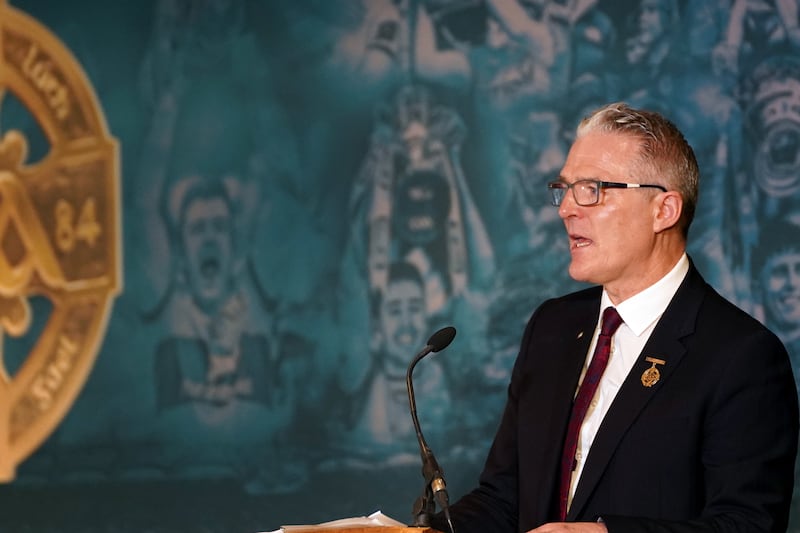
Burns rules himself out of the running for a different presidency
Jarlath Burns said at the weekend that he was glad of the opportunity to clear up the question of his running for the presidency of Ireland – which has been widely speculated upon even though the election comes at the end of this year, before Burns’s term of office ends in 2027.
“Let me do that very clearly, that is not on my radar,” he said. “My plan is when I finish this job to go back to St Paul’s, Bessbrook to be principal – the place I love, the place I miss, even though this is the best job you could possibly have, that’s where I belong anyway. So, thank you for giving me the opportunity to rule that out very clearly.”
He’s not the first GAA president to have been linked with a run for the Áras – MEP Seán Kelly is a perennial – but the office hasn’t anything like as strong a connection with the association as the role of taoiseach: incumbent Micheál Martin, Enda Kenny, Brian Cowen and Bertie Ahern to name only the most recent.
Obviously, Mary McAleese (1997-2011) is an exception and for her troubles now chairs the Steering Group on Integration between the GAA and the women’s Gaelic sports organisations.
But strangely, previous presidents of Ireland, no matter how steeped in the struggle for independence – Eamon De Valera (who had been a rugby player) and Seán T O’Kelly (a strong Gaelic League activist) – there have been few with a strong background in the GAA.
In history, one of the most prominent connections between the association and the Áras was the embarrassing removal of the first holder of the office, Douglas Hyde, another Irish language activist, from his role as patron of the GAA for attending a 1938 soccer international between Ireland and Poland. — Seán Moran














